Themed collection Lab on a Chip Emerging Investigators

Droplet microfluidic system for high throughput and passive selection of bacteria producing biosurfactants
Novel microfluidic technique for functional selection of biosurfactant-producing microorganisms. Single bacterial cells are encapsulated into picoliter droplets for clonal cultivation and passively sorted at high throughput by interfacial tension.
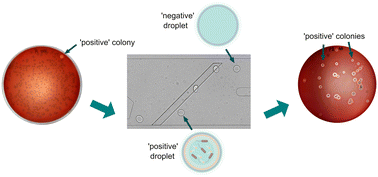
Lab Chip, 2024,24, 1947-1956
https://doi.org/10.1039/D3LC00656E
AMF-SporeChip provides new insights into arbuscular mycorrhizal fungal asymbiotic hyphal growth dynamics at the cellular level
A new microfluidic platform – the AMF-SporeChip – enables immobilisation of arbuscular mycorrhizal fungal spores and confrontation of asymbiotic hyphae with physical obstacles, allowing the identification of various exploration strategies.

Lab Chip, 2024,24, 1930-1946
https://doi.org/10.1039/D3LC00859B
A microfluidic chip for sustained oxygen gradient formation in the intestine ex vivo
Here, we have developed a 3D printed microfluidic device capable of oxygen gradient formation within intestinal tissue slices ex vivo. The device is open-welled and compatible with external electrochemical recording during tissue analysis.

Lab Chip, 2024,24, 1918-1929
https://doi.org/10.1039/D3LC00793F
Enhanced acoustic streaming effects via sharp-edged 3D microstructures
The use of 3D sharp-edged microstructures enhances the versatility of sharp-edge driven microstreaming, with control over the magnitude and orientation of streaming vortexes for targeted particle microfluidic manipulation.

Lab Chip, 2024,24, 1626-1635
https://doi.org/10.1039/D3LC00742A
Quantitative mechanical stimulation of GPR68 using a novel 96 well flow plugin
Mechanosensitive proteins play a crucial role in a range of physiological processes, including hearing and regulating blood flow. This work presents a novel microfluidic approach compatible with 96-well plates to quantify their mechanosensitivity.

Lab Chip, 2024,24, 1616-1625
https://doi.org/10.1039/D3LC00767G
Cascaded elasto-inertial separation of malignant tumor cells from untreated malignant pleural and peritoneal effusions
A cascaded elasto-inertial cell separation device for pretreatment-free, high-recovery-ratio, and high-purity separation of malignant tumor cells from clinical malignant pleural and peritoneal effusions.

Lab Chip, 2024,24, 697-706
https://doi.org/10.1039/D3LC00801K
A hybrid fluorescent nanofiber membrane integrated with microfluidic chips towards lung-on-a-chip applications
Here, we report a fluorescent electrospun nanofiber membrane for integration with microfluidic chips towards lung-on-a-chip applications complemented with computational fluid dynamics modelling. Created with https://BioRender.com.

Lab Chip, 2024,24, 224-233
https://doi.org/10.1039/D3LC00751K
Micropillar enhanced FRET-CRISPR biosensor for nucleic acid detection
High-aspect ratio micropillar arrays are fabricated to enhance the detection performance of FRET-CRISPR assay.

Lab Chip, 2024,24, 47-55
https://doi.org/10.1039/D3LC00780D
Slip formation of a high-density droplet array for nucleic acid quantification by digital LAMP with a random-access system
A droplet array SlipChip is presented to compartmentalize fluid into partitions at high density with a simple “Load-Slip” operation, and to perform digital LAMP quantification of SARS-CoV-2 nucleic acids with a random access system.

Lab Chip, 2021,21, 3086-3093
https://doi.org/10.1039/D1LC00361E
Microfluidic organ-on-a-chip model of the outer blood–retinal barrier with clinically relevant read-outs for tissue permeability and vascular structure
This organ-on-a-chip device of the outer blood retinal barrier will allow future studies of complex disease mechanisms and treatments of visual disorders using clinically relevant endpoints in vitro.

Lab Chip, 2021,21, 272-283
https://doi.org/10.1039/D0LC00639D
μCB-seq: microfluidic cell barcoding and sequencing for high-resolution imaging and sequencing of single cells
We present a platform for on-chip molecular barcoding that combines high-resolution imaging with genomic analysis, enabling multi-modal phenotypic measurements in single cells.

Lab Chip, 2020,20, 3899-3913
https://doi.org/10.1039/D0LC00169D
Double emulsion flow cytometry with high-throughput single droplet isolation and nucleic acid recovery
We have developed a novel workflow (sdDE-FACS, ![[s with combining low line]](https://www.rsc.org/images/entities/char_0073_0332.gif) ingle
ingle ![[d with combining low line]](https://www.rsc.org/images/entities/char_0064_0332.gif) roplet
roplet ![[D with combining low line]](https://www.rsc.org/images/entities/char_0044_0332.gif) ouble
ouble ![[E with combining low line]](https://www.rsc.org/images/entities/char_0045_0332.gif) mulsion FACS) that allows robust production, screening, and sorting of single double emulsion droplets with complete nucleic acid recovery.
mulsion FACS) that allows robust production, screening, and sorting of single double emulsion droplets with complete nucleic acid recovery.

Lab Chip, 2020,20, 2062-2074
https://doi.org/10.1039/D0LC00261E
A bespoke microfluidic pharmacokinetic compartment model for drug absorption using artificial cell membranes
A new type of pharmacokinetic compartment model using artificial cell membranes that predicts intestinal absorption three times more accurately than the current state of the art.
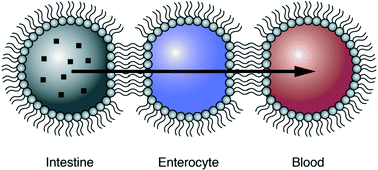
Lab Chip, 2020,20, 1898-1906
https://doi.org/10.1039/D0LC00263A
Deep learning guided image-based droplet sorting for on-demand selection and analysis of single cells and 3D cell cultures
To uncover the heterogeneity of cellular populations and multicellular constructs we show on-demand isolation of single mammalian cells and 3D cell cultures by coupling bright-field microdroplet imaging with real-time classification and sorting using convolutional neural networks.

Lab Chip, 2020,20, 889-900
https://doi.org/10.1039/D0LC00055H
Microfluidic impedance cytometry device with N-shaped electrodes for lateral position measurement of single cells/particles
In this paper, we present an N-shaped electrode-based microfluidic impedance cytometry for the measurement of the lateral position of single cells and particles in continuous flows.

Lab Chip, 2019,19, 3609-3617
https://doi.org/10.1039/C9LC00819E
Microfluidic rapid and autonomous analytical device (microRAAD) to detect HIV from whole blood samples
This handheld sample-to-answer platform combines blood cell separation, viral lysis, and isothermal nucleic acid amplification with capillary fluidics and heating controls to automatically detect HIV from blood samples within 90 minutes.

Lab Chip, 2019,19, 3375-3386
https://doi.org/10.1039/C9LC00506D
Magnetic microboats for floating, stiffness tunable, air–liquid interface epithelial cultures
Magnetically anchored microboats that can reliably and rapidly create air–liquid interface culture conditions in substrate-stiffness tunable epithelial cell cultures.

Lab Chip, 2019,19, 2786-2798
https://doi.org/10.1039/C9LC00267G
Automated “pick and transfer” of targeted cells using dielectrophoresis
A highly specific and automated device is desired for selective manipulation of single cells. The device in this work picks cells based on their inherent properties using dielectrophoresis and automatically transfers those at a transfer site.

Lab Chip, 2019,19, 2512-2525
https://doi.org/10.1039/C9LC00409B
Organ-on-chips made of blood: endothelial progenitor cells from blood reconstitute vascular thromboinflammation in vessel-chips
Organ-on-chips made of blood: personalized medicine with microfluidics.

Lab Chip, 2019,19, 2500-2511
https://doi.org/10.1039/C9LC00469F
Measurement of the magnetic susceptibility of subtle paramagnetic solutions using the diamagnetic repulsion of polymer microparticles
The diamagnetic repulsion of polymer microspheres in a microfluidic platform enables the discrimination of magnetic susceptibility of subtle paramagnetic solutions.

Lab Chip, 2019,19, 2356-2361
https://doi.org/10.1039/C9LC00245F
3D-printing enabled micro-assembly of a microfluidic electroporation system for 3D tissue engineering
The LEGO® concept is used to build 3D microchannel networks as a 3D μ-electrotransfection system for efficient exchange of nutrition and waste allowing 3D cell growth, while sustaining uniform 3D electric fields during cellular transfection.
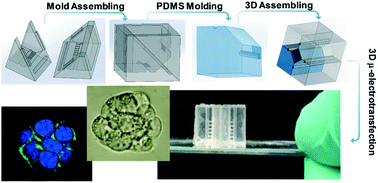
Lab Chip, 2019,19, 2362-2372
https://doi.org/10.1039/C9LC00046A
Integrated inertial-impedance cytometry for rapid label-free leukocyte isolation and profiling of neutrophil extracellular traps (NETs)
A novel integrated inertial-impedance cytometer for rapid and label-free electrical profiling of neutrophil extracellular trap formation (NETosis).

Lab Chip, 2019,19, 1736-1746
https://doi.org/10.1039/C9LC00250B
A miniaturized push–pull-perfusion probe for few-second sampling of neurotransmitters in the mouse brain
Measuring neurotransmitters in the brain of living animals is a challenging task, especially when detailed information at high temporal resolution is required.

Lab Chip, 2019,19, 1332-1343
https://doi.org/10.1039/C8LC01137K
On-chip phenotypic investigation of combinatory antibiotic effects by generating orthogonal concentration gradients
We propose a microfluidic cell-based drug screening platform to investigate combinatory antibiotic effects by automatically generating concentration combinations.

Lab Chip, 2019,19, 959-973
https://doi.org/10.1039/C8LC01406J
Resolving protein mixtures using microfluidic diffusional sizing combined with synchrotron radiation circular dichroism
Microfluidic diffusional sizing is combined with synchrotron radiation circular dichroism to resolve the secondary structure of protein mixtures.
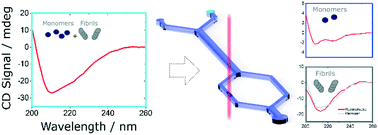
Lab Chip, 2019,19, 50-58
https://doi.org/10.1039/C8LC00757H
Functional TCR T cell screening using single-cell droplet microfluidics
Droplet-based single cell platform allows functional screening and sorting of desirable TCR T cells to accelerate development of adoptive T cell therapies.

Lab Chip, 2018,18, 3733-3749
https://doi.org/10.1039/C8LC00818C
An integrated adipose-tissue-on-chip nanoplasmonic biosensing platform for investigating obesity-associated inflammation
A biomimetic ‘adipose-tissue-on-chip’ integrated with nanoplasmonic biosensors for in situ multiplexed cytokine secretion analysis of obese adipose tissue.
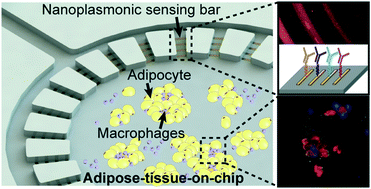
Lab Chip, 2018,18, 3550-3560
https://doi.org/10.1039/C8LC00605A
Microfluidic diamagnetic water-in-water droplets: a biocompatible cell encapsulation and manipulation platform
We report a new technique that combines all aqueous droplet microfluidics with diamagnetic manipulation to isolate single-cell encapsulating water-in-water droplets.

Lab Chip, 2018,18, 3361-3370
https://doi.org/10.1039/C8LC00867A
Measurement and mitigation of free convection in microfluidic gradient generators
Microfluidic gradient generators are used to study the movement of living cells, lipid vesicles, and colloidal particles in response to spatial variations in their local chemical environment.
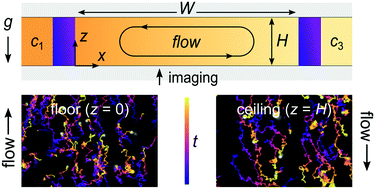
Lab Chip, 2018,18, 3371-3378
https://doi.org/10.1039/C8LC00526E
A liver-immune coculture array for predicting systemic drug-induced skin sensitization
Recapitulation of liver-immune interactions in a microfluidic compartmentalized coculture array is sufficient to accurately predict systemic drug-induced skin sensitization.
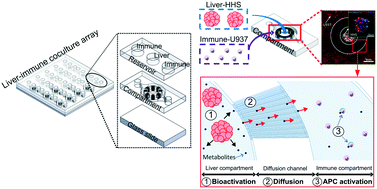
Lab Chip, 2018,18, 3239-3250
https://doi.org/10.1039/C8LC00790J
Graphene-based biosensor for on-chip detection of bio-orthogonally labeled proteins to identify the circulating biomarkers of aging during heterochronic parabiosis
Click-A+Chip identifies azido modified proteins with a novel graphene linker that performs copper-free-click chemistry on the chip's surface.
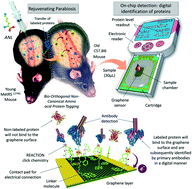
Lab Chip, 2018,18, 3230-3238
https://doi.org/10.1039/C8LC00446C
A microfluidic platform for lifelong high-resolution and high throughput imaging of subtle aging phenotypes in C. elegans
Aging produces a number of changes in the neuronal structure and function throughout a variety of organisms.

Lab Chip, 2018,18, 3090-3100
https://doi.org/10.1039/C8LC00655E
User-defined local stimulation of live tissue through a movable microfluidic port
A two-component, two-phase microfluidic device provides a movable port for user-selectable local stimulation of living tissue slices.
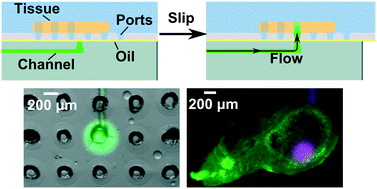
Lab Chip, 2018,18, 2003-2012
https://doi.org/10.1039/C8LC00204E
Microfluidic lung airway-on-a-chip with arrayable suspended gels for studying epithelial and smooth muscle cell interactions
A novel lung airway-on-a-chip system that uses a suspended hydrogel to enable epithelial–matrix–smooth muscle cell interactions.
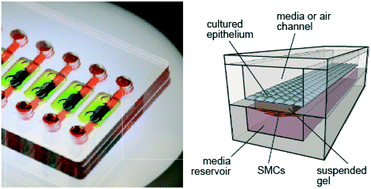
Lab Chip, 2018,18, 1298-1309
https://doi.org/10.1039/C7LC01357D
Flow dynamics control endothelial permeability in a microfluidic vessel bifurcation model
Endothelial barrier function is known to be regulated by a number of molecular mechanisms; however, the role of biomechanical signals associated with blood flow is comparatively less explored.
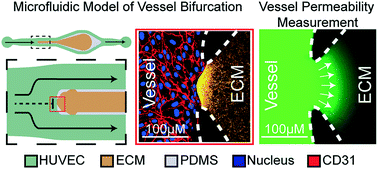
Lab Chip, 2018,18, 1084-1093
https://doi.org/10.1039/C8LC00130H
Buffer-free integrative nanofluidic device for real-time continuous flow bioassays by ion concentration polarization
A novel portable device combining an aptamer probe and a nanofluidic component was developed, enabling the buffer-free continuous monitoring of small molecules in biological fluids.
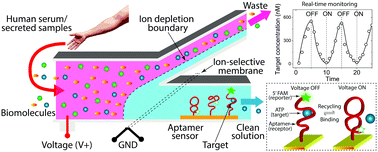
Lab Chip, 2018,18, 574-584
https://doi.org/10.1039/C7LC01066D
Upgrading well plates using open microfluidic patterning
We developed an open microfluidic hydrogel-patterning technology that creates networks of cell culture chambers in well plates for multiculture experiments.
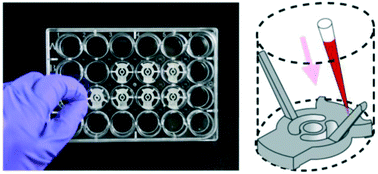
Lab Chip, 2017,17, 4253-4264
https://doi.org/10.1039/C7LC00878C
Automated microfluidic platform for systematic studies of colloidal perovskite nanocrystals: towards continuous nano-manufacturing
An automated microfluidic platform enables systematic high-throughput studies of mixing enhancement on the emission band-gap of in-flow synthesized perovskite quantum dots, resulting in kinetically tunable nanocrystals.
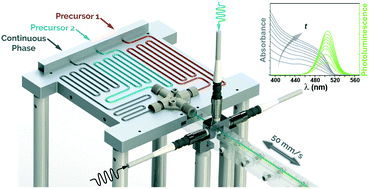
Lab Chip, 2017,17, 4040-4047
https://doi.org/10.1039/C7LC00884H
A microfluidic device for partial immobilization, chemical exposure and behavioural screening of zebrafish larvae
Movement response of zebrafish to chemicals is of interest in screening studies. We introduce a microfluidic device for partial immobilization, head L-arginine exposure and movement screening of zebrafish larvae under controlled conditions.
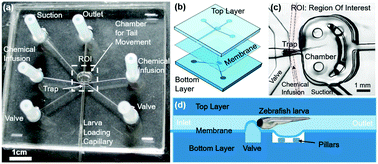
Lab Chip, 2017,17, 4048-4058
https://doi.org/10.1039/C7LC00786H
Probing blood cell mechanics of hematologic processes at the single micron level
Single-micron PDMS devices provide insight into the biophysical effects that vascular matrices have on platelets, RBCs, and neutrophils.

Lab Chip, 2017,17, 3804-3816
https://doi.org/10.1039/C7LC00720E
Stereolithographic printing of ionically-crosslinked alginate hydrogels for degradable biomaterials and microfluidics
Light-based 3D printing of alginate hydrogels using ionic crosslinking enables reversible patterning with controlled degradation.
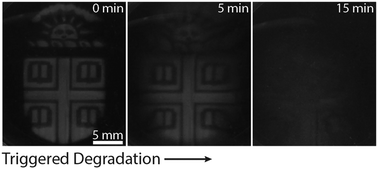
Lab Chip, 2017,17, 3474-3488
https://doi.org/10.1039/C7LC00694B
Image-based feedback and analysis system for digital microfluidics
A new feedback and biological analysis system for digital microfluidics that uses an imaging based setup.
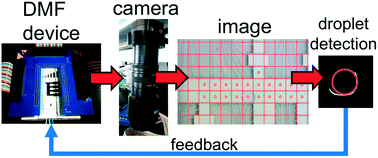
Lab Chip, 2017,17, 3437-3446
https://doi.org/10.1039/C7LC00826K
Label-free ferrohydrodynamic cell separation of circulating tumor cells
A size-based ferrohydrodynamic cell separation (FCS) device capable of enriching intact circulating tumor cells with high throughput and high recovery rate.
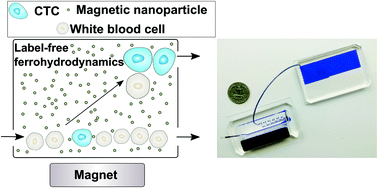
Lab Chip, 2017,17, 3097-3111
https://doi.org/10.1039/C7LC00680B
About this collection
Lab on a Chip is please to present this growing web collection showcasing some of the best research in the field of miniaturisation being conducted by early career scientists. This series is edited by Dino Di Carlo (UCLA, USA), Yoon-Kyoung Cho (UNIST, South Korea) and Piotr Garstecki (IPC PAC, Poland), and aims to highlight up-and-coming researchers in the early stages of the independent careers.
This collection is updated when new Emerging Investigator series papers are published, so keep checking the page for new articles!
You can read our feature interviews with the corresponding authors included in the series on our blog. More details about the series and how to apply are available at rsc.li/loc-emerging